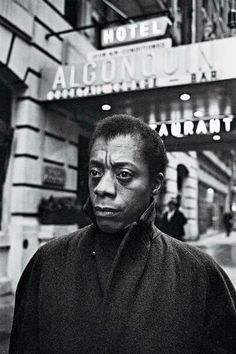As Baldwin wrapped up Go Tell It on the Mountain with Elizabeth’s Prayer and The Threshing Floor, I was struck by how the story evolved into underscoring the religious and social hypocrisies surrounding Gabriel and women. This was not an unexpected turn, given Baldwin’s fascination with a church of love and early conflicts presented in the novel. Hypocrisy is also a common point brought up by religious critics and atheists, of whom I, in the spirit of full disclosure, am quite familiar with. My personal biases evident, I was fascinated with how Baldwin approached hypocrisy, particularly in his portrayal of faithful characters feeling justified in sinning.
Gabriel is the prime example of this, as he repeatedly references God having forgiven him for his sins as an adolescent, and for his committing adultery with Esther. Similar to Elizabeth’s justification on page 21 (“Your Daddy beats you…because he loves you”) John’s perception of his father is revealed in his hallucination whilst being “saved”. “Then his father was upon him; at his touch there was singing, and fire…I’m going to beat it out of you.’” (191). Both of these cases highlight that Gabriel’s character, in real life and in “spirit” uses religion and piety to justify violence against his children. This is shown once again by Elizabeth’s aunt when Baldwin writes “It was true that her aunt was always talking about how much she loved her sister’s daughter…[Elizabeth] sensed that what her aunt spoke of as love was something else–a bribe, a threat, an indecent will to power” (150). Again, the aunt’s devotion and ideals of morality allow her to treat her niece terribly, to refuse to support or comfort her at all, all while pretending she “loves” her niece. This case presents the idea that the understanding of love as taught by religion, the tough love, the beat-your-child-because-it-will-save-their-soul love, is self-serving and incredibly harmful to (please forgive my word choice) actual interpersonal relationships. Obviously not all religious teachings of love are like this, but it seems in Baldwin’s understanding, those who learn of love and morality from the church and its interpretation of God’s love, are terrible at actually loving others.
I was ever-curious to delve into the effect of religion on women. In Elizabeth’s Prayer, Elizabeth sees her love with Richard and John’s birth as a “disgrace” (148) despite clearly loving Richard as described on page 161. John having been born out of wedlock presents so great a stigma that Elizabeth forever sees him as “her” sin. She rejoices as his soul is saved and he is forgiven for “his” sin, which is utterly ridiculous because by Elizabeth’s own narrative, John’s only sin is being born of her out of wedlock. The core belief that, without having done anything, everyone is born into sin by a sinful act, creates an incredibly potent environment of shame and guilt over one of, if not the most, natural human interactions. The stigma surrounding sex and marriage, but particularly sex, permeates all of the women in Go Tell It on the Mountain, from the degrading portrayal of Deborah to Gabriel’s self-aggrandized vision of Elizabeth, with proper sex in wedlock, will give birth to a royal lineage. Gabriel treats Deborah, Esther, and Elizabeth as his possessions and mechanisms of his desires, then blames them as independent parties and tempters when he sins. The cycle of possessive actions, power, and control, met with double standards, blame, and guilt, drives the hypocrisy of the religion Baldwin depicts.
Yet I am still glad that Baldwin acknowledges the merits and comforts religion provides. This much is shown just by John’s attitude at the end of the book, when he says “‘I’m ready…I’m coming. I’m on my way.’” (215). Baldwin’s persistence in religion’s comforts does seem to tie in to how he views his own “new” religion based around love. But it takes a lot to transition from the type of religion Baldwin grew up with and the type he adopted.
